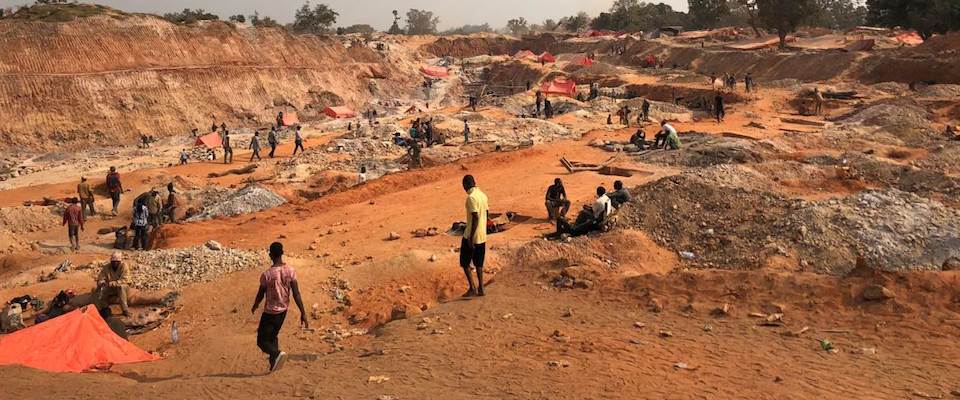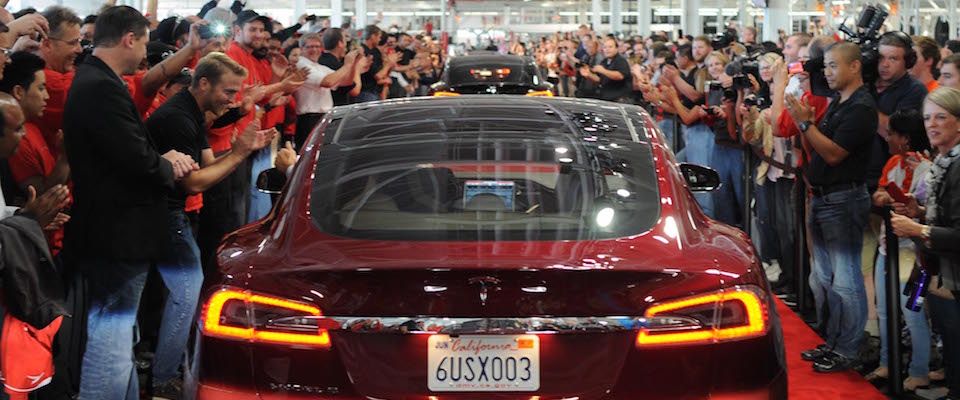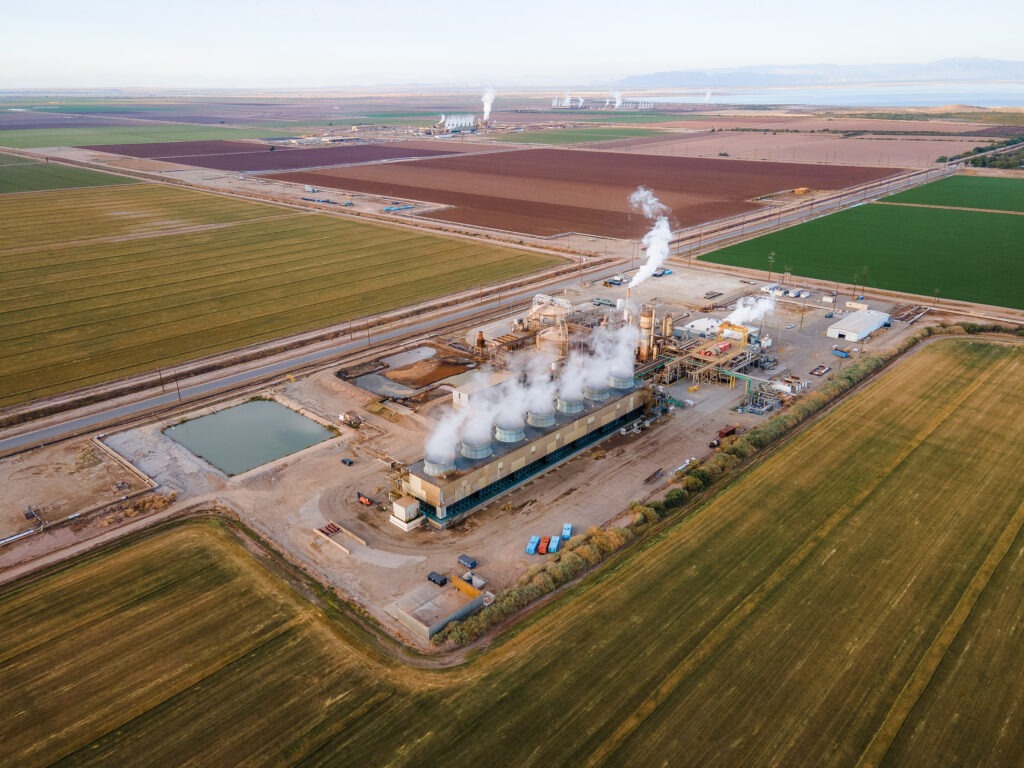Cobalt has been valued for centuries for the deep blue color it imparts to ceramic glazes and glass. Its current value has little to do with such stuff, however. Cobalt is sought today because it’s a critical element in lithium ion batteries, the devices that power our cell phones, computers, and electric vehicles. Layering lithium and cobalt oxide in battery cathodes allows for the dense storage and rapid charging and discharging of electricity. But that capability comes at a steep cost, both in terms of environmental degradation and human suffering, especially amid growing dependence on rechargeable lithium ion batteries.
Cobalt demand is climbing like an F-15 in vertical takeoff, with consumption expected to surpass 120,000 tons annually by 2020, up by a third from 2016’s figure of 94,000 tons. In that same time, lithium ion batteries are expected to require 60 percent of all cobalt production, reflecting a 58 percent increase from 2016.
“There are a range of scenarios for artisanal mines, but none of them are good,” says Siddharth Kara who traveled to the DRC to investigate cobalt operations.
On Earth, cobalt occurs in compounds associated with other minerals, most notably copper and nickel. And one place on the planet where copper ores are particularly rich in cobalt is the southeastern portion of the Democratic Republic of the Congo. That region is estimated to hold about 40 percent of global cobalt reserves and currently accounts for 60 percent of worldwide production.
Which is a problem—not so much from the logistical end, but from the perspective of human rights. The DRC is one of the most unstable and war-torn nations on earth. By some analyses, it is little more than a web of warlord-controlled fiefdoms loosely contained by a weak and corrupt central government held together by a consortium of NGOs and corporate players. And while much of the DRC’s cobalt comes from large industrial mines owned by multinational corporations, a significant portion of it originates from so-called “artisanal” mines that pay workers a pittance and subject them to extreme health risks and physical danger.
“There are a range of scenarios for artisanal mines, but none of them are good,” says Siddharth Kara, a human rights activist, adjunct lecturer at UC Berkeley, and visiting scientist at the Harvard School of Public Health. Kara has traveled twice to the DRC to investigate cobalt operations.
“Virtually everyone mines for cobalt in the southeastern provinces because there is nothing else to do [for work],” says Kara. “There’s surface mining near bodies of water, where people spend all day sifting and rinsing ores under the hot sun.” Others work underground for shifts as long as 24 or 36 hours.
And many of the miners are minors.
“Sometimes you have children who are actually working in [hard-rock mine shafts], and sometimes you have children sneaking into corporate mine sites to sift through tailings piles,” Kara says. “They’re working under appallingly unhealthy and dangerous conditions.”

While many of the miners are working voluntarily, others are laboring under conditions of virtual indentured servitude—or worse, according to Kara.
Some of the mining sites near the Zambian border are controlled by armed guards. Says Kara, “I don’t think ‘enslaved’ is too strong of a term.”
Even the phrase “voluntary labor” may be a bit of a stretch, he says. While it’s true that most local residents dig for cobalt willingly—and that people are migrating from other parts of the country to work heterogenite [cobalt bearing] deposits—the underlying reasons have more to do with necessity than choice. And while the artisanal mines are hellish, corporate mines—which typically operate through joint ventures with government partners—they’re hardly showcases of worker equity and fair treatment. Wages are low, conditions are hazardous, and benefits are nonexistent, says Kara.
As to the local NGOs and other initiatives working for change, Kara calls them “a drop in the bucket.” His vision for change is much more ambitious. “The corporations need to take the lead to reform the entire sector. They have to establish decent wage scales, sufficient worker protections, schools and clinics. There has to be equitable participation in profits, and adequate environmental safeguards and remediation.”
But it’s not that simple. Cobalt ore mined in the DRC—whether from industrial or artisanal sources—is first purchased by Chinese buyers and combined for preliminary refining. This rough concentrate is then sent to China for final processing, with the pure cobalt sold to companies that fabricate lithium ion batteries. And then it goes to you, incorporated in a new phone or laptop.
“We all share the blame,” says Kara.
But there may be a way out. Cobalt’s paradox—ideal industrial applications coupled with relative rarity—could be obviated if we find another more common element to use in its place. And we have. Or rather, Berkeley materials science and engineering professor Gerbrand Ceder and his associates have. In 2014, they devised “disordered rocksalts” from cheap, readily-available magnesium as a substitute for the cobalt layers in lithium ion battery cathodes.
Cobalt alternatives, of course, presage another human rights conundrum: What happens to the miners in the DRC if cobalt prices crash?
“You need these beautiful precise layers of cobalt in typical cathodes or the lithium ions move all over the place and become disorganized,” says Ceder. “The layers act like planes, like galleries that direct the ion flow so you get rapid charging and good energy density.”
Ceder and his colleagues have determined that their magnesium-based disordered rocksalts also allowed robust lithium ion transport—just not in the same way.
“Our material also has passageways, but they’re more like random channels in rock,” Ceder says. “And it turns out that enough of the lithium ions still get through, like water diffusing through porous rock. It’s a percolation process rather than a directed flow along a gallery.”
The most exciting thing about the discovery, says Ceder, “is that it’s opened the entire periodic table to a new set of chemistries. Multiple groups around the world are now working on this. Along with magnesium, we’re now seeing cathodes made from molybdenum, niobium, titanium—there are already 15 or 20 novel cathodes out there.”
That said, it’s a long road from the laboratory to the factory, says Ceder. No alt-cathodes are likely to hit the marketplace in the near term: battery stability and processing scalability still have to be worked out and verified for every cathode candidate. But it’s critical that viable substitutes for cobalt cathodes are found, and not only because of the ongoing human suffering and environmental degradation in the DRC.
“Given the likely wholesale electrification of the transportation fleet, demand for cobalt is only going to intensify,” says Ceder. “Our research indicates that cobalt supplies will be very tight by 2025. And without alternatives, they’re going to stay tight.”
Cobalt alternatives, of course, presage another human rights conundrum: What happens to the miners in the DRC if cobalt prices crash? There’s no denying that their work is dangerous and ill-paid, but it doesn’t change the fact that it’s the only work available.
Might be something to think about while taking out a second mortgage for that new Tesla.





















